#the colossi of memnon
Explore tagged Tumblr posts
Photo
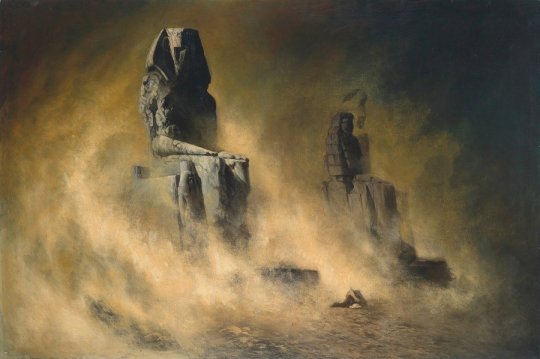
Karl Wilhelm Diefenbach, The Colossi of Memnon in a Sandstorm (1896)
#art#Karl Wilhelm Diefenbach#the colossi of memnon#sandstorm#artist#artwork#painting#art nouveau#symbolism#u
824 notes
·
View notes
Text


Day 6
The Colossi of Memnon
6 notes
·
View notes
Text


#acorigins#assassin's creed#assassin's creed origins#amenhotep iii#colossi of memnon#theban necropolis#ubisoft#photomode#gamingedit#virtual photography#gaming photography#pc gaming#pc share#camera tools
14 notes
·
View notes
Text


The Colossi of Memnon in the Mortuary Temple of Amenhotep III, Kom el-Hettân, West Thebes
170 notes
·
View notes
Text
Jewel of the Nile
One of the greatest ancient cities on the Upper Nile was Thebes. But look at any modern map and you’ll never find it. Why? Because the city took on a different name following the Muslim conquest of Egypt: Luxor. So named, possibly because of the palatial residences and the riches the Arabs found when they arrived. After all, the name Luxor derives from the romanicsed Arabic qasr meaning ‘castle’ or ‘palace.’
From Hurghada, Luxor was approximately four hours drive along the highways. The gong was slow and there wasn’t much to see outside the window except desert, the occasional wild tussock of grass and other passing vehicles.
Was it any wonder I’d fall asleep on the way there? By the time I groggily blinked awake, we were passing by fields of green on the left and an actual cityscape on the right. True, it was no Western-style city but the local population had suddenly exploded. I watched from my window as people went about their daily lives, heading to market or riding around on carts as they carried sugar cane.


Unfortunately, to reach our cruise ship to paddle up the Nile, we had to go down a very narrow rural road that was sprinkled liberally with checkpoints. There might not have been traffic lights in this part of Egypt but there was certainly a large number of armed police wielding the classic assault rifle from every video game ever: the AK-47, as a show of intimidation. That or they sported submachine guns on their persons. They even had small watch-towers, accessed only by rickety wooden ladders!
Once we had checked into our floating hotel, and after a quick lunch at the buffet, we piled back on the coach to witness the sights and sounds of Karnak Temple. Suffice it to say, the towering pillars and obelisks were breathtaking to behold. Everywhere I turned, hieroglyphs lined the walls, still retaining the colour they had from several millenniums ago.
Primarily dedicated to Amun-Re, in the information centre before we properly entered the historical site, there was even a copy of the ship that Ra would ride on every night as he descended into the Underworld to fight his way back up to the surface.
It boggles my mind that such treasures had been hidden beneath the desert sand until a century or two ago. So much history and culture lost and rediscovered.
With Popo in tow, however, there was a lot she wasn’t able to see and enjoy. It should be known that Popo was almost 85 (at the time of posting, she is already that ripe old age) and had an old injury from her childhood that meant she has limped for most of her life. Contracting COVID-19 last year in September only made her mobility issues worse, giving her chronic pain in her legs.
Tethered to Popo made exploring the ruins of Karnark that much harder, although not quite impossible. As she wasn’t able to walk much, I usually found a shaded seated area for her to rest at before taking off to snap all the photographs that I needed of ancient kings and their tributes to the gods, along with indecipherable hieroglyphs that held little meaning to me.
By the time we finished at Karnak, the hour was quite late. Still intent on getting the full experience of the East Bank of the Nile, we stopped at the Temple of Luxor to admire the many statues of King Ramesses II. There was even a carved depictions that showed off his many sons and what they had bequeathed their father when he had held court.
Deep inside Luxor Temple we also saw carvings from the Greek era of pharaohs. The most important distinction, as pointed out by our tour guide, were the slight curves of the thighs and ankles, as well as the rounded stomach. The Greeks, it seems, desperately wanted to emulate the Egyptians during their occupation of their area and had not been intent on destroying their culture in a bid to co-exist. A valiant effort considering how modern civilisations have steam-rolled over indigenous populations since the 15th century.
After we had rushed around Luxor Temple, our first day at Luxor ended.



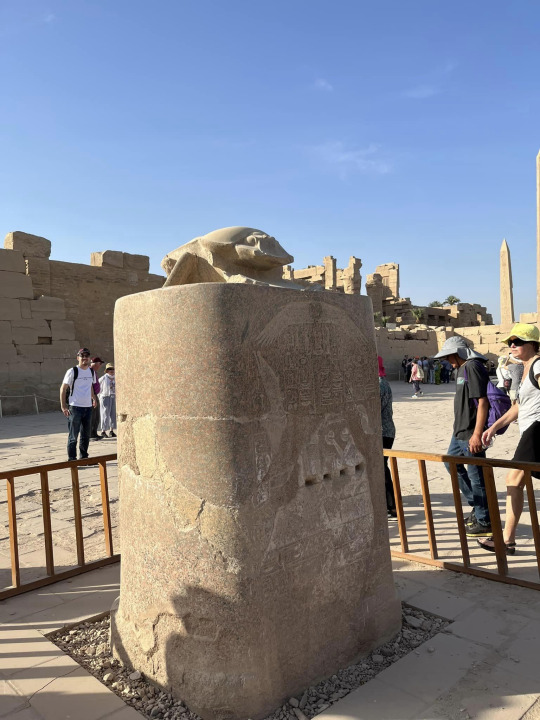
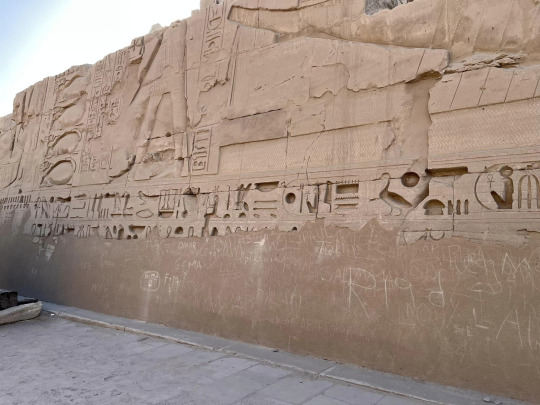
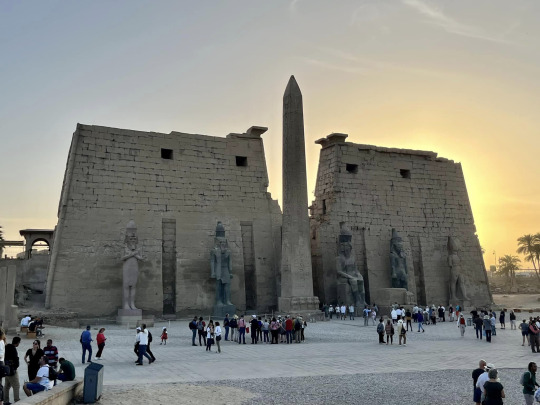
The second day at Luxor had us rising early to hurriedly scoff down breakfast as we raced to the West Bank of the Nile before our ship would start cruising upstream. This, of course, was where the Valley of the Kings lay. After getting a quick rundown of some of the famous individuals that were discovered within, and shown copies of photographs taken during Howard Carter’s expedition when Tutankhamen was unearthed, I dove down deep into KV 8: Merenptah’s tomb before shambling over to KV6: Rameses IX.
Finally, I joined the the huge line to take a peek at KV2 to see what Ramesses IV had in store. Surprisingly enough, written on the entrance to the tomb were words in Greek followed by a symbol of early Christianity: the fish. But what truly impressed me was the fact that down in the depths of Rameses IV tomb was that many of the hieroglyphs still retained a lot of their original colour, be that red, blue and gold.
But the main reason for why the line was so long was due to the large number of people all eager to snap selfies or group photos with particular arresting reliefs, thereby holding up the line as I tried to squeeze past. Rest assured, it was quite annoying as I only wanted to quickly duck in and duck right back out with as little fuss as possible.
And while there were other tombs that were open to the public at the Valley of the Kings, a few also required additional payment to visit. Of particular note was that of Tutankhamen’s tomb. One I didn’t venture down into as most of his treasures had been removed and were on display in numerous museums around the world.
Before we returned to our cruise ship, the Jaz Celebrity, we also stopped at Deir al-Bahari where colossal statues of Queen Hatsheput, in the form of Osiris, stood guard.
As one of the only places that still retained her name, historians were able to identify objects and carvings from her time period before her son, Thutmoses III has been able to scrape them off. So, despite his best efforts to erase the woman pharaoh, the name Hatsheput has remained until this modern age.
Ah, sweet irony.
In any case, we arrived at Deir al-Bahari when the sun was at its zenith. And though I was there in early March, the temperature was still unbearably hot. After climbing to the very top, I was sweating like a pig and desperate to return to the air-conditioned bliss of the tour bus. That or enjoy some nice delicious ice-cream.
Alas, since Popo had returned to the coach before I was able to ask for a few dollars to pay for an ice-cream, I didn’t have the necessary funds to buy myself a cold snack. Instead, I returned to the bus with plenty of time to spare to board the boat and begin our cruise up to Edfu and Aswan beyond.



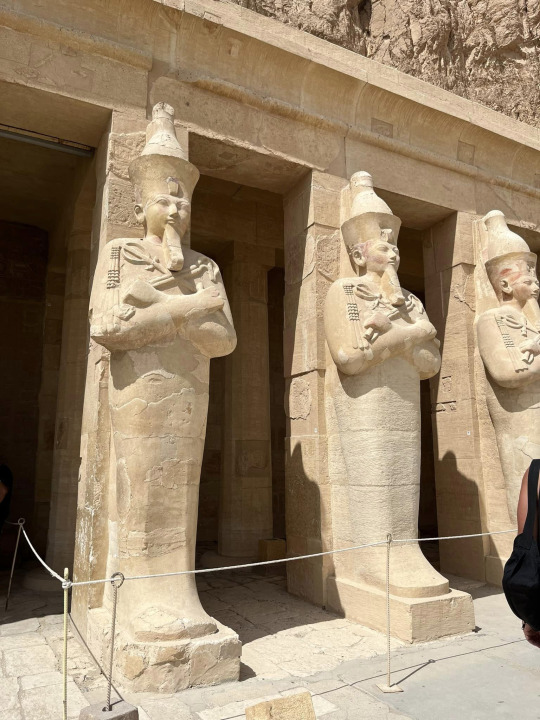
Oh, and before I forget, we also visited the open air statues of Memnon right before heading to the Valley of the Kings and were pestered to buy merchandise from the hawkers that lined the street. Popo bought two bags and a pouch while I sat there impatiently hoping to learn additional history and/ or mythology of a bygone age. After all, I didn’t come to Egypt just to shop around.
The only real additional kernals of fact I managed to glean as we drove to the Valley of the Kings was that the Ancient Egyptians were one of the first civilisations to realise that the year was 365 days. They split the year into 12 months. Each month was three weeks and each week was ten days. The missing 5 days on the calendar were explained as Amun and Amunet meeting each other in secret.
And because they were such stargazers, astrology too, can be attributed to the Ancient Egyptians.
And another thing to note, I did spot a set of traffic lights in and around Luxor Temple. It was probably set up there due to the sheer number of people crossing the road needing safe passage from the rampant number of cars and tour buses that frequented the area.
So, maybe Egypt isn’t as chaotic as I first thought it was!
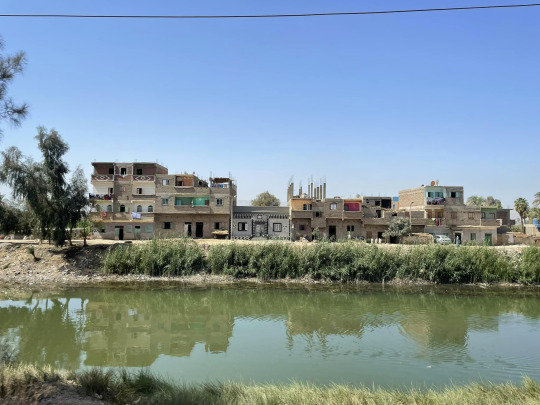



#travel blog#egypt#luxor#valley of the kings#karnak temple#luxor temple#deir al-bahari#colossi of memnon
4 notes
·
View notes
Photo
This photo is taken during the seasonal flooding of the Nile which has important symbolic meaning re: rebirth — but what I really want to share is that I was reading about these statues the other day and learned that in ancient times the legs accrued lots of graffiti from travelers, mostly poetry inscriptions. 11 of the 107 inscriptions are by female writers, which is 6% of all surviving works from the ancient world verifiably written by females (source: Keegan Peter, Graffiti in Antiquity, ed. Routledge 2016). One poet, Julia Balbilla, was a member of Hadrian’s court and friend of his wife Vibia Sabina; she wrote three heavily Sappho-inspired poems to commemorate their travels and visits to the statues. Hadrian was famously gay & his lover Antinous drowned in the Nile a month earlier on that trip; I wonder if Balbilla could have been a lover of Sabina, and if the royal couple had a lavendar marriage? some others have hypothesized this, but we’ll never know.
“Yesterday Memnon received [Hadrian's] wife in silence, / so that the beautiful Sabina might come back here again. / For the lovely form of our queen pleases you.”



Colossi of Memnon, two massive stone statues of Pharaoh Amenhotep III; 14th century BC
#colossi of memnon#memnon#egypt#egyptology#sculpture#statue#archaeology#history#ancient rome#ancient history#female writers#poems#poetry#hadrian#antinous#nile river#art#literature#womens history#cool#interesting#graffiti#ancient art#ancient poetry#writing#ruins#beauty#dark academia#sappho#ancient world
29K notes
·
View notes
Text

to see so many sunsets
(olympus xa2, Colossus of Memnon, Egypt)
1 note
·
View note
Text

Gala Dinner Experience
Indulge in a Gala Dinner Experience with Savvy Travelers, savoring exquisite cuisine and entertainment!
#egypt nile river cruise#egypt nile cruise#luxurious nile cruise#nile river cruise#cairo exploration tour#pyramids giza visit#valley kings excursion#egyptian museum tour#alabaster mosque visit#sakkara necropolis tour#mena house experience#hatshepsut temple exploration#colossi memnon sightseeing#edfu temple discovery#aswan felucca ride#abu simbel excursion#cataract hotel tea#philae temple visit#nubian village tour#kom ombo visit#karnak temple exploration#luxor market shopping#hathor temple tour#dendara temple visit#abdeen palace tour#coptic cairo exploration#welcome reception cocktail#gala dinner experience#egyptologist guided tour#exclusive shore excursions
0 notes
Text

'The Colossi of Memnon in a Sandstorm'
by Karl Wilhelm Diefenbach (1896)
56 notes
·
View notes
Text

Die Memnonkolosse II (The Colossi of Memnon II) by Albert Zimmermann (1808-1880)
190 notes
·
View notes
Text



Colossi of Memnon at the mortuary temple of Amenhotep III, Necropolis of Thebes, Egypt, 1965. --Eliot Elisofon
#history#art#photography#Egypt#historyofcoolkids#art history#ancient#world#world history#Amenhotep#Thebes#aboutart
15 notes
·
View notes
Text


#acorigins#assassin's creed#assassin's creed origins#colossi of memnon#theban necropolis#ubisoft#photomode#gamingedit#virtual photography#gaming photography#pc gaming#pc share
6 notes
·
View notes
Text

Colossi of Memnon, Thebes
Photo: Brian Brake
92 notes
·
View notes
Text

Colossi of Memnon in front of the Mortuary Temple of Amenhotep III, Theban Necropolis, Egypt
British vintage postcard, mailed from Cairo to London
#old#postcard#postkaart#theban#british#colossi#iii#vintage#briefkaart#postal#ansichtskarte#temple#amenhotep#ephemera#london#photography#photo#memnon#egypt#postkarte#tarjeta#theban necropolis#mailed#necropolis#the mortuary temple#historic#sepia#cairo#mortuary#carte postale
12 notes
·
View notes
Text

Getty Center, Public domain, via Wikimedia Commons (photographer is John Beasly Greene)
One of the colossi of Memnon. His set of photos were the first taken of these statues
4 notes
·
View notes
Text

Amenhotep III (Colossi of Memnon in the background)
#amenhotep iii#pharaoh#amarna period#Egypt#Egyptian#egyptology#ancient egypt#ancient egyptian#temple#mortuary temple#Kemet#Kemetic
9 notes
·
View notes